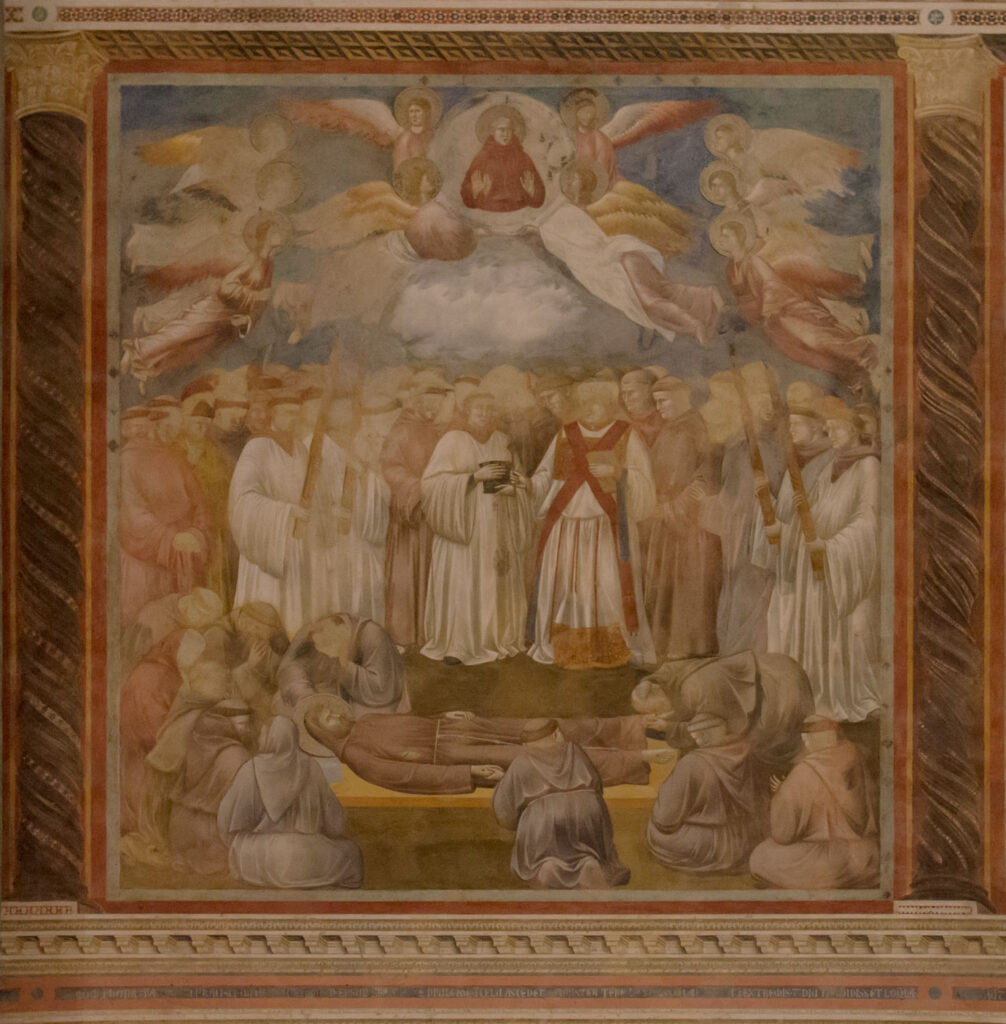Patron Saint of the entire Franciscan family and patron saint of ecology
A short history
Francis was born in Assisi around 1181/82 and died in Santa Maria degli Angeli on 3 October 1226. He was baptised John, but his father, Pietro di Bernardone, a cloth merchant between France and Italy, called him Francis. At the age of 20, he went into battle but was taken prisoner for a whole year. Once free, he began to choose silence and solitude, leaving the city centre and exploring the abandoned countryside of Assisi. He was looking for treasure, but it was still well hidden.
He embarked on an expedition to Puglia. He set off, covering a short distance as far as Spoleto, and his adventure came up against a dream. Who should he serve: the master or the servant? He returned to Assisi. One day, as he entered a small church in ruins, San Damiano, he heard the voice of the Crucifix saying to him: “Francis, go and repair my house”. But God had no need of bricklayers, because his house was made of people. The poor and the lepers became his favourite company, and it was to them that he devoted all the attention and money of his father’s workshop.
After a short period of solitary life, the first disciples gathered around him and the first fraternity was formed, which took up residence at Tugurio in Rivotorto. Francis drew up a rule of life and, with his eleven companions, travelled to Rome to submit it to the pontiff Innocent III, who gave his oral approval. In 1212, the “fraternity”, which had grown considerably, moved to the Porziuncola, not far from Assisi.
Driven by the desire to bear witness to his faith to the whole world, Francis went to Egypt in 1219, where he obtained permission from the Sultan Malek-el-Kamel to preach, thus opening the way to dialogue with other religions. Back in Assisi, suffering physically and saddened by the contradictions between the friars during his absence, Francis gave up his post as minister general of the fraternity. On 29 November 1223, Honorius III approved the Franciscan Rule, thus sanctioning the official birth of the Order of Friars Minor. Assisted by three companions, Angelo, Leo and Rufino, and now almost blind, Francis withdrew in 1224 to the hermitage of La Verna (l’Alverne), where he received the stigmata. He died on 3 October 1226 at the Porziuncola and was canonised by Gregory IX on 16 July 1228.
What this commemoration tells us
The life and spirituality of Saint Francis touch us very closely, because Mary of the Passion wanted to graft us into the Franciscan family so that we could draw from Saint Francis his most incisive virtues – minority, simplicity, joy and fraternity – and thus preserve ourselves from the spirit of worldliness and evil.
In fact, our charism is consolidated and deepened in the Franciscan sap, imbued with the Gospel. Francis, contemplating Mary in the humility of the Incarnation, uniting himself to the redemptive suffering of Christ at La Verna, adoring the Eucharist with ardent love, living the ecclesial meaning of apostolic action animated by intense contemplation, offers us the vital humus in which the synthesis of the elements that make up our charism is realised.
How to pray on this day
The transitus of Saint Francis, in the different ways in which it is celebrated, offers us a meditation and contemplation of the spirit of Saint Francis: unconditional love for Christ and for our brothers and sisters, and urges us to make his way of life our own, not so much by repeating what he lived, but by assimilating and nourishing ourselves with his sap of love, humility, minority and joy.
Another way of praying on the feast of Saint Francis is to give thanks unceasingly for all that God gives us each day, for the beauty of the creatures he puts in our path, for the grace hidden in the little things of each day, in praise of the Creator in the name of all creation.


